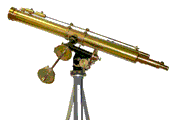Department of Physics and Astronomy: Publications and Other Research

M. Eugene Rudd Publications
Document Type
Article
Date of this Version
1-1996
Abstract
Absolute ionization cross sections for 28–114-keV helium ion impact on atomic hydrogen, differential in energy and angle of the ejected electrons, have been obtained from crossed-beam measurements and previously measured cross sections for molecular hydrogen targets. A radio frequency discharge source produced a mixed atomic and molecular target with a typical dissociation fraction of 74%. Energy spectra were measured from 1.5 to 130 eV by an electrostatic analyzer with a resolution of 5%. The angular range was 15° –160°. Results are compared with calculations based on the first Born, continuum-distorted-wave–eikonal-initial-state, and classical trajectory Monte Carlo methods. Total electron yields are obtained by combining calculations that are separately performed for liberating the target and projectile electrons. Model potentials are used to represent the interparticle-separation-dependent screening of the nuclear charges experienced by the electrons. Though projectile electron emission is a negligible component of the total ionization cross section for the present collision energies, its contribution is significant for particular regions of the spectrum of ejected electrons. Through comparison with our proton-impact data [Kerby et al., Phys. Rev. A 51, 2256 (1995)], differences and similarities are demonstrated owing to the common asymptotic charge of these two projectiles but differing nuclear charges and the electron carried by the He+ ion. Comparisons are also made illustrating the differences between atomic and molecular hydrogen targets.


Comments
Published in Physical Review A Volume 53, Number 1, January 1996. Copyright © American Physical Society; used by permission.